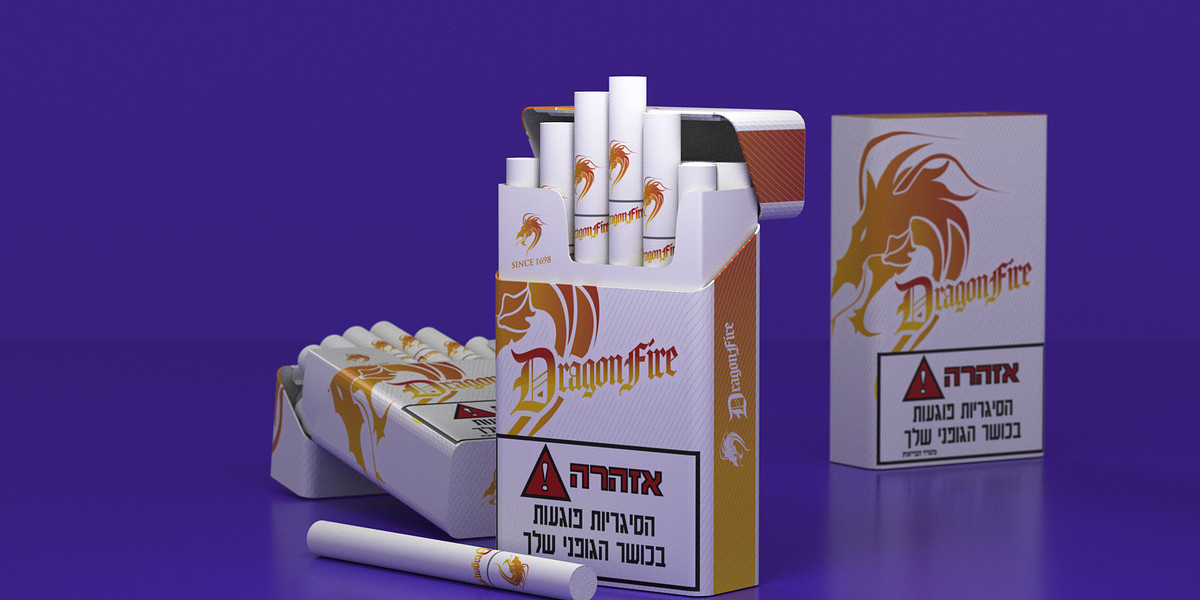In today’s competitive market, brands are going beyond visual appeal. Sensory branding has become a powerful strategy. One key part of this is haptics, the sense of touch. In the tobacco industry, cigarette packaging plays a crucial role in this experience.
The Power of Touch in Branding
Touch is often the first sense we engage with a product. When we pick up a pack of cigarettes, we instantly feel the texture, weight, and design. These details might seem small, but they create a lasting impression.
Haptic branding focuses on making the customer feel something physical that builds emotional attachment. It is not just about how the pack looks but how it feels in the hand. Brands aim to create a smooth, luxurious, or even rugged touch to match their identity.
Many cigarette brands use soft-touch finishes, embossing, and unique materials to enhance the tactile experience. For example, a matte finish gives a velvety feel, while embossing highlights the logo and adds dimension. The weight of the pack also influences perception. A heavier pack can suggest quality and substance.
When customers feel a strong connection through touch, they are more likely to remain loyal to a brand. This connection can even influence buying decisions. The haptic design tells a story before a single word is read.
A good tactile design also sets the product apart on the shelf. With so many similar-looking packs, the feel becomes a way to stand out. Customers may even remember a pack based on how it felt in their hands, not just how it looked.
Therefore, the sense of touch plays a silent yet powerful role in branding. It bridges the gap between visual identity and emotional connection. This is why cigarette companies invest so much into the texture and material of their packaging.
Emotional Impact Through Packaging Texture
Texture isn’t just physical. It triggers feelings. A rough texture might feel bold or rugged. A soft texture might feel premium or luxurious. These textures become part of the brand story.
For example, if a brand wants to target an elite market, it might choose a smooth, sleek finish. This could make the customer feel important or classy. On the other hand, a gritty texture could speak to a rugged, no-nonsense audience.
Haptics works silently. A person may not notice the texture at first, but it shapes their impression. They associate a smooth feel with elegance or a matte texture with sophistication. These feelings can influence their decision to choose that product over another.
Emotional branding is powerful. When customers feel a certain way about a brand, they are more likely to stay loyal. This is even more important in industries like tobacco, where advertising is limited. The pack becomes the ad. Its texture needs to speak clearly and emotionally.
It’s not just about pleasing touch. It’s about creating a feeling that fits the brand. When that is done well, the customer doesn't just remember the product. They remember how it made them feel. This builds long-term brand loyalty.
The emotional connection also encourages word-of-mouth marketing. People talk about things that make them feel something. A unique texture can become a talking point. Over time, this strengthens the brand’s position in the market.
So, texture is more than just design. It is a bridge to the customer’s emotions. This makes it a crucial tool in sensory branding.
Material Choices That Influence Perception
The materials used in cigarette packaging are not chosen by chance. They are selected carefully to support brand identity and market position. From paper quality to finishes, each material sends a message.
For instance, a premium brand may choose heavy cardstock with a soft-touch finish. This gives a feeling of class and durability. In contrast, a budget brand may use thin, glossy paper, which feels less refined. That physical difference sets customer expectations before they even open the pack.
Some materials reflect light differently. A pearlescent paper can look elegant and expensive. A matte paper absorbs light and feels grounded and solid. These effects create different moods. They influence how the product is perceived at first glance and first touch.
Brands also consider durability. Cigarette packs are carried in pockets, bags, and cars. They are handled frequently. So the materials must last while maintaining their feel and look. A pack that wears out quickly reflects poorly on the brand.
Material also affects how other features work. Embossing is more effective on thicker materials. Foil stamping looks richer on certain paper types. These choices must all align with the brand message.
In a market where visual ads are restricted, packaging materials must work harder. They not only hold the product but communicate quality, style, and trust. Smart material selection is key to successful sensory branding in cigarettes.
Design Features That Add to Haptic Experience
Cigarette packaging design includes many features aimed at creating a unique haptic experience. Embossed logos, foil textures, and specialty finishes add value. These are not just for looks. They improve how the pack feels in the hand.
Embossing and debossing are common techniques. Embossing raises a design element, while debossing sinks it into the material. Both create tactile contrast. The fingers can feel the difference, adding interest and encouraging interaction.
Foil stamping is also popular. It gives a shiny, metallic finish that can feel slightly raised or smooth, depending on the process. It signals luxury and can make the product seem high-end.
Other finishes, such as spot UV coating, add glossy elements to a matte surface. This creates a physical difference that fingers pick up immediately. It encourages the user to touch, feel, and engage with the pack.
Designers may also play with shape. Most cigarette packs are rectangular, but subtle shape changes in edges, lids, or folds can create a different experience. Rounded edges may feel more comfortable, while sharp angles may feel modern and bold.
These features create a multi-sensory experience, even when only using the sense of touch. They influence how the customer perceives the brand. These design choices build a connection that lasts beyond the first purchase.
A well-designed pack doesn't just protect the product. It adds value. It gives customers a reason to choose that brand again and again.
The Role of Consistency in Sensory Design
Consistency in packaging design builds trust. When customers experience the same feel every time they pick up a product, it builds a sense of reliability. In the world of haptics, this consistency is critical.
A brand that changes its packaging texture too often may confuse its audience. Even small changes can alter how the customer feels about the product. Maintaining the same material, texture, and finish ensures the customer always knows what to expect.
This doesn’t mean packaging should never evolve. Brands can improve their designs. But core sensory elements should stay consistent. This includes the weight of the pack, texture, and feel of the box.
Brands that achieve this consistency often create a strong bond with their users. Touch becomes a memory trigger. When the customer picks up the pack, it brings back the familiar feeling. This builds trust and loyalty over time.
Consistency also helps in shelf recognition. When a customer sees and feels the same design, they can quickly identify their preferred brand. This is vital in retail spaces where many products compete for attention.
The use of custom cigarette packaging has allowed some brands to maintain this level of consistency. By controlling every detail, they make sure each pack offers the same tactile experience. This keeps the brand strong and memorable.
Haptic Branding as a Marketing Strategy
With restrictions on tobacco marketing, brands must find creative ways to connect with consumers. Haptic branding offers a powerful solution. It uses the sense of touch to create a unique experience that customers associate with the brand.
This approach doesn't rely on images or slogans. Instead, it uses texture, material, and form to tell a story. The customer feels the story with their fingers. This makes it more personal and harder to forget.
When someone picks up a cigarette pack that feels special, it creates a sense of ownership. It’s not just a product. It’s an experience. This feeling can turn casual users into loyal customers.
Haptic branding also encourages engagement. When a pack feels interesting or different, the user is more likely to pick it up, hold it, and remember it. This increases the chances of repeat purchases.
In a crowded market, where traditional ads are banned or limited, this physical connection becomes the brand’s strongest message. It speaks directly to the user through touch.
This strategy also allows for brand storytelling. Each material or texture choice can reflect part of the brand’s values. Whether it’s elegance, boldness, or tradition, haptics help express that.
Consumer Behavior and Touch Psychology
The way consumers behave can be heavily influenced by touch. Studies show that people are more likely to buy a product if they can touch it first. In cigarette sales, packaging is the only physical contact before purchase. This makes touch even more important.
Touch creates a feeling of ownership. When someone picks up a pack and likes the way it feels, they are more likely to want it. This reaction happens quickly, often before they even think about it.
The human brain reacts strongly to sensory input. A smooth, soft surface can create feelings of calm and luxury. A textured, firm surface might suggest boldness and confidence. These emotional reactions guide decisions more than logic.
Retail behavior also supports this idea. Shoppers often touch products before placing them in their cart. That moment of contact can decide the sale. In cigarette packaging, this brief moment of touch must deliver the right message.
Brands that understand this use haptics wisely. They design their packs not just to look good but to feel right in the customer’s hand. This attention to touch can increase both initial sales and long-term loyalty.
Future Trends in Haptic Packaging
As technology and materials evolve, haptic packaging is also changing. Future trends show a rise in innovative textures, eco-friendly materials, and smart packaging.
Brands are exploring textures that change with temperature or light. These packs feel different depending on the environment, adding an extra layer of interaction. Some even use micro-textures that mimic natural materials like leather or stone.
Sustainability is also a growing trend. Companies are looking for ways to use recyclable materials without losing the luxury feel. This balance between green and premium will define the next phase of packaging.
Smart packaging is another area of growth. Some cigarette packs may use subtle tech features that respond to touch, pressure, or movement. This includes temperature-sensitive inks or QR codes that unlock digital experiences when touched.
Even as designs evolve, the goal remains the same: to create a tactile experience that connects emotionally with users. Haptic innovation will continue to be a powerful tool for branding in the cigarette industry.
Brands that embrace these changes while maintaining core sensory values will stay ahead in the market.
Conclusion
By focusing on touch, cigarette packaging goes beyond mere protection. It becomes a powerful marketing tool. The textures, materials, and finishes influence how customers feel, behave, and stay loyal. Sensory branding, especially through haptics, is shaping the future of how cigarette brands stand out and connect with their audience.
Click Here: https://cbdpackagingstore.com/cigarette-boxes/








